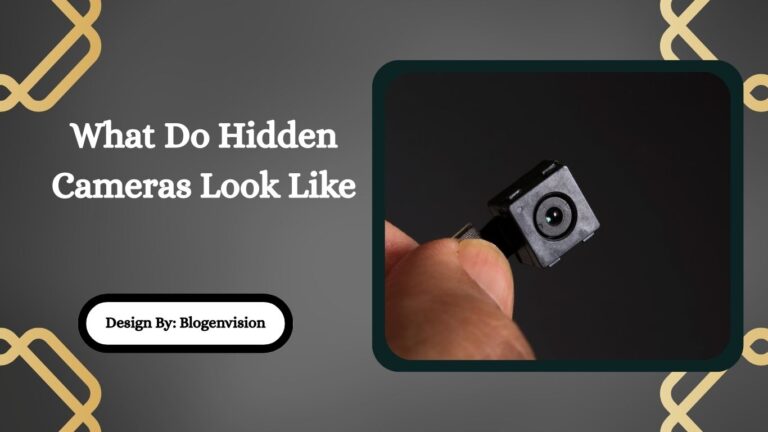How Do Cellular Trail Cameras Work – Comprehensive Guide!
Cellular trail cameras use motion sensors and mobile networks to send real-time photos or videos to your phone or cloud storage, offering remote monitoring for hunting, security, or wildlife research.
Cellular trail cameras have revolutionized how hunters, wildlife enthusiasts, and property owners monitor remote areas. These smart cameras provide real-time image transmission using mobile networks, eliminating the need for physically checking memory cards.
But how exactly do cellular trail cameras work? What makes them different from standard trail cams? In this comprehensive guide, we’ll break down the components, functionality, benefits, and use cases of cellular trail cameras in easy-to-understand terms.
What Is a Cellular Trail Camera?
A cellular trail camera is a motion-activated camera equipped with a cellular modem that sends captured images or videos to your smartphone, email, or a cloud-based platform using a mobile data network (like AT&T, Verizon, or T-Mobile). Unlike traditional trail cameras that store photos locally on an SD card, cellular models provide remote access, offering convenience and real-time monitoring.
Key Components of Cellular Trail Cameras

To understand how these cameras work, it’s important to look at their essential components:
- Camera Sensor and Lens: The camera captures photos and videos, just like a traditional trail cam. Most models feature infrared sensors for night vision and a wide-angle lens to cover larger areas.
- PIR Motion Sensor: Passive Infrared (PIR) sensors detect movement and heat signatures. When an animal or person passes in front of the sensor, the camera is triggered to capture an image or video.
- Cellular Modem (SIM Enabled): This component connects to a cellular network using a SIM card, allowing the camera to transmit data (photos and videos) over mobile data.
- Antenna: Cellular cameras include external or internal antennas to ensure reliable signal strength, especially in rural or forested areas.
- Power Source: Most cellular trail cameras are battery-powered, with some supporting solar panels for extended field operation.
- SD Card Slot: Even though the camera transmits images wirelessly, it still stores them locally as a backup.
- Mobile App or Web Portal: Manufacturers offer companion apps or websites that allow users to view footage, manage settings, and monitor battery life or signal strength remotely.
How Does a Cellular Trail Camera Work? Step-by-Step Process
Here’s a simplified breakdown of the workflow:
Step 1: Motion Detection
The PIR sensor detects movement and heat changes in the surrounding area. This typically happens when an animal or human passes by.
Step 2: Image or Video Capture
Once triggered, the camera captures a high-resolution photo or short video (depending on the settings).
Step 3: File Compression and Transmission
The captured media is compressed (if necessary) and transmitted via the cellular network to a designated app, email, or cloud account.
Step 4: Remote Access
You receive an instant alert or push notification. Open the app or login to the web portal to view the footage in real time or on demand.
Do Cellular Trail Cameras Require a Data Plan?
Yes, cellular trail cameras require a data plan, just like a smartphone. These plans are offered by camera manufacturers in partnership with cellular providers. Data usage depends on:
- Number of photos or videos transmitted
- Image/video resolution
- Frequency of transmission
Some cameras offer flexible pay-as-you-go plans or unlimited monthly data, while others allow you to use your own SIM card.
Cellular Trail Camera vs. Wi-Fi Trail Camera: What’s the Difference?
Many people confuse cellular trail cameras with Wi-Fi trail cameras, but they serve different purposes.
| Feature | Cellular Trail Camera | Wi-Fi Trail Camera |
| Connection Type | Mobile network (3G/4G/LTE) | Local Wi-Fi signal |
| Range | Unlimited (as long as signal) | Limited to Wi-Fi range |
| Data Plan Required? | Yes | No |
| Real-Time Alerts | Yes | Only when in Wi-Fi range |
| Ideal For | Remote/outdoor locations | Home or nearby surveillance |
Benefits of Using Cellular Trail Cameras
- Remote Monitoring: Monitor your property, hunting land, or research site without being physically present.
- Time and Energy Efficient: No more frequent trips to check memory cards everything is sent straight to your device.
- Enhanced Security: Instant alerts help detect trespassers, poachers, or unauthorized visitors in real-time.
- Better Wildlife Tracking: Get consistent data about animal movement patterns for improved hunting strategies.
- Weather Resistance: These cameras are built for outdoor use and can withstand rain, snow, and extreme temperatures.
Common Use Cases for Cellular Trail Cameras
- Hunting: Hunters use them to scout deer, boar, or elk activity before and during the season.
- Wildlife Research: Biologists and researchers use cellular trail cameras to study animal behavior without disturbing habitats.
- Farm & Property Surveillance: Monitor livestock, barns, gates, or cabins from afar.
- Construction Sites: Track equipment or monitor for unauthorized access after hours.
- Rural Home Security: Protect remote homes, driveways, and vacation cabins with real-time alerts.
Choosing the Right Cellular Trail Camera
When shopping for a cellular trail cam, consider the following:
- Network Compatibility: Ensure the camera works with a carrier that offers strong coverage in your area.
- Image & Video Quality: Look for 12MP or higher resolution with at least 720p video recording.
- Trigger Speed & Detection Range: Faster trigger speeds (0.2 to 0.5 seconds) and wider detection zones (up to 80 feet) mean better results.
- Battery Life: Opt for long-lasting lithium batteries or models that support solar charging.
- Subscription Plans: Review monthly or annual data plans and app features before buying.
- Ease of Use: Choose a model with a user-friendly interface and intuitive mobile app.
Popular Brands of Cellular Trail Cameras
Here are some reliable manufacturers known for cellular trail cams:
- Spypoint (e.g., Link-Micro-LTE)
- Moultrie Mobile
- Bushnell CelluCORE
- Tactacam Reveal
- Browning Defender
- Stealth Cam
Each brand offers unique features, so always compare models based on your specific needs.
Tips for Using Cellular Trail Cameras Effectively

- Test signal strength before installation using the app or camera screen.
- Mount at the right height (waist to chest level) and angle slightly downward.
- Avoid direct sunlight or facing the rising/setting sun to reduce false triggers.
- Use camouflage to blend the camera with the environment.
- Check battery level and SD card storage regularly from the app.
- Update firmware to access new features and improvements.
Are Cellular Trail Cameras Legal?
Laws regarding trail camera usage vary by region and use case. In some U.S. states, it’s illegal to use trail cameras during hunting season due to unfair advantage concerns. Always check local and state regulations before deploying your camera, especially on public land.
Future Trends in Cellular Trail Camera Technology
With ongoing innovation, expect future trail cameras to offer:
- 5G connectivity for faster data transfer
- Artificial intelligence for animal species identification
- Cloud storage integration with facial or tag recognition
- Eco-friendly solar systems with smart power-saving modes
- Two-way audio or speaker capabilities for active deterrence
FAQs:
1. Do cellular trail cameras work without signal?
No, cellular trail cameras require a mobile network signal to transmit images. However, they will still capture and store photos on an SD card if no signal is available until connectivity resumes.
2. Can I use my phone’s SIM card in a trail camera?
Most cellular trail cameras require data-specific SIMs or prepaid plans. Using your phone’s SIM may not work unless the camera is unlocked and supports that carrier’s network bands and plans.
3. Are cellular trail cameras secure from hacking?
Reputable brands use encrypted data transmission, but always set strong passwords and keep firmware updated. Avoid cheap knock-off brands that may lack basic security protocols or customer support.
4. How far can a trail camera detect motion?
Most trail cameras detect motion up to 60–100 feet. However, detection range depends on PIR sensor quality, environmental conditions, and camera placement. Higher-end models offer better detection performance.
5. Can multiple users access one trail camera?
Yes, many camera apps allow multiple users or devices to access footage, depending on the manufacturer. Some apps offer sharing options or role-based access for teams or families.
Conclusion:
Cellular trail cameras have transformed how we monitor wildlife and property by combining smart sensors with mobile connectivity. These cameras offer unmatched convenience, remote access, and real-time updates, making them ideal for hunters, researchers, and rural property owners alike. By understanding how they work and what features matter, you can confidently choose the right model for your needs. Whether you’re tracking deer movements or securing a remote cabin, cellular trail cams provide a powerful, reliable solution for modern outdoor surveillance.







